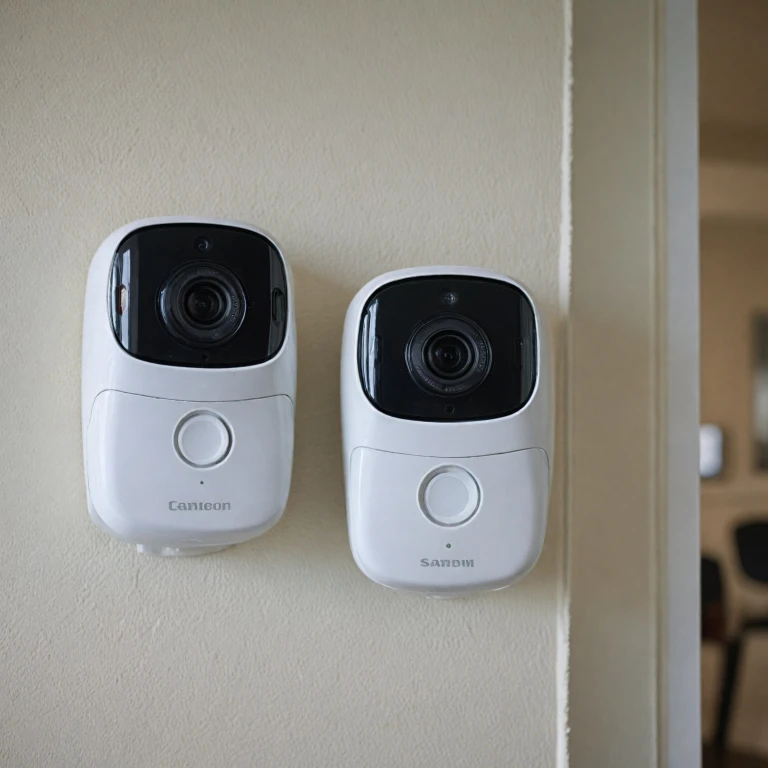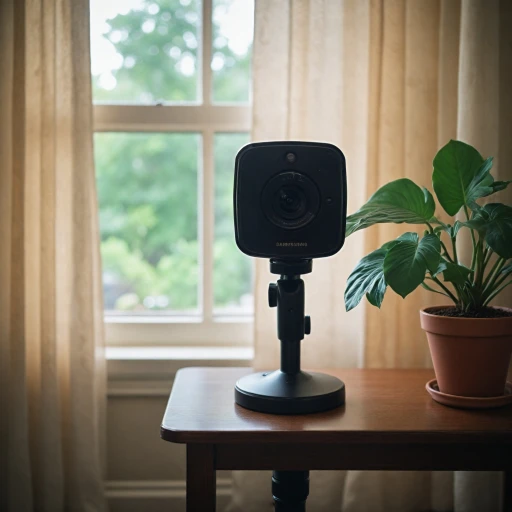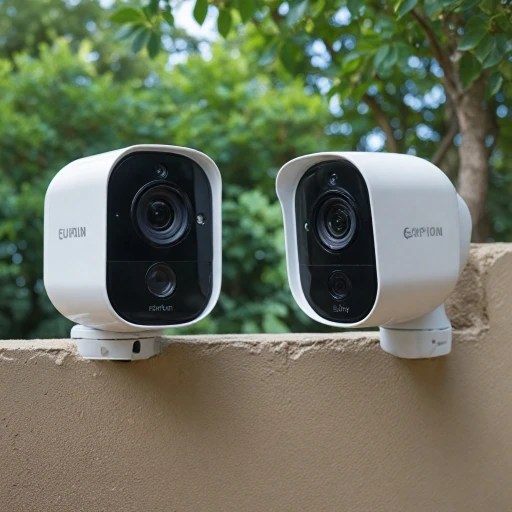Understanding the Basics of Ring and Blink Cameras
Exploring the Core Elements of Amazon's Security Cameras
When it comes to home security, Ring and Blink cameras, both products of Amazon, offer a range of options that cater to different needs. Understanding their basics can guide you in choosing the right security solution. Ring Cameras: Primarily known for their video doorbells, Ring provides a wide array of security cameras. These include both indoor and outdoor models, which feature smart technology and video monitoring capabilities. The Ring Video Doorbell is particularly popular, thanks to its versatile installation options and smart features. Blink Cameras: Blink, on the other hand, focuses on compact, easy-to-install indoor and outdoor cameras. With products like the Blink Mini and the Blink Outdoor, these devices emphasize affordability and simplicity. They offer quality video monitoring without requiring professional installation or complex setups. Both Ring and Blink ensure that their devices are highly compatible with Amazon Alexa, enhancing their smart home integration potential. Moreover, these cameras provide various options for video storage. You can choose between local storage with a sync module or go for cloud storage solutions to keep your footage accessible. To further optimize your Ring camera setup, you might consider consulting professional resources for optimal home security, ensuring you make the most of its features.Installation and Setup: Ring vs Blink
Setup Process and Ease of Installation
When choosing between the blink and ring security cameras for your home, understanding the installation process is key to ensuring a smooth setup experience. Both brands offer distinct approaches, tailored to different user needs and preferences.
Ring Camera Installation
Ring cameras are a part of Amazon's extensive ecosystem of smart devices, and they stand out with their easy-to-follow installation guides. Most Ring devices, like the Ring video doorbell or Ring floodlight cam, require some level of wired installation. However, the process is straightforward, especially with detailed guides available online. For optimal security, check out our installation guide for the Ring floodlight camera.
Wireless options like the Ring Stick Up Cam offer more flexibility, providing hassle-free installation. Users simply need to mount the camera, connect it to Wi-Fi, and follow the setup steps in the Ring app.
Blink Camera Installation
Blink cameras are known for their simplicity and ease of setup, often requiring less technical know-how. Devices such as the Blink Outdoor and Blink Mini emphasize a plug-and-play approach. Most Blink cameras run on batteries and don't require any wiring, making them particularly user-friendly for those looking to avoid complicated installations.
Pairing your Blink device with the sync module further streamlines the process, ensuring all Blink cameras operate smoothly within the home security ecosystem. Simply positioning the blink cameras appropriately, connecting them to the sync module, and adding them through the Blink app completes the process.
Choosing the Right System
Both Ring and Blink offer solutions that cater to a variety of needs, whether it's a focus on outdoor security with a Ring floodlight cam or a simple, battery-operated Blink camera for indoor monitoring. It ultimately depends on whether you prefer a more comprehensive setup with potential wiring or a straightforward, wireless approach.
Video Quality and Performance
Visual Clarity and Functionality
When it comes to video quality and performance, both the Ring and Blink cameras have made a significant mark in the home security domain. However, they cater to somewhat different needs and priorities, providing users with a range of options that match varying situations and preferences. Ring cameras offer high-definition video capabilities, ensuring that every detail within your view is captured with precision. The video doorbell series, in particular, is a focal point for front-door monitoring where clear visuals are indispensable. Their resolution usually starts from 1080p, which is ideal for clear and detailed footage. Moreover, Ring's commitment to night vision ensures that even in low-light conditions, the video footage retains clarity. Blink cameras, meanwhile, afford flexibility with their indoor and outdoor camera choices. The Blink outdoor camera is weather-resistant, making it suitable for various environmental conditions. These cameras are known for their ease of use and battery efficiency, a valued feature in scenarios where cabling is impractical. Although Blink generally offers a resolution of 1080p, their Blink Mini brings simplicity and affordability to the table without skimping on quality.Privacy and Storage Options
Both Ring and Blink provide secure cloud storage solutions, with Ring offering a more comprehensive professional monitoring option. This facilitates constant monitoring and the potential for emergency response. Local storage options are also available, especially with Blink's sync module, which lets you save video footage directly, giving you control over your data. Ring offers a subscription plan that includes cloud storage, which can be essential if you prefer to access your recordings anywhere at your convenience. On the other hand, Blink’s cloud storage subscription offers flexibility, allowing users to choose plans based on their specific video storage needs. For those who favor local solutions, Blink's devices can work without a subscription plan, storing footage on a USB drive via the sync module. Both brands ensure data privacy is maintained, with strong encryption and secure transmission protocols, giving users peace of mind regarding their home security data. The expansive video options they provide address different needs, whether it's detailed, continuous monitoring or flexible, battery-efficient solutions. For more insights on enhancing home security solutions beyond video capabilities, exploring options such as enhancing home security with smart keypads can be beneficial for users seeking comprehensive protection strategies.Smart Features and Integration
Exploring the Intuitive Smart Features
When evaluating the smart features of Ring and Blink cameras, both systems offer unique benefits to enhance your home security experience. The two companies, both under the Amazon umbrella, continuously innovate their products, offering various options aimed at different user needs.
Ring cameras are well-known for their wide range of smart capabilities. They include seamless integration with Amazon Alexa, allowing users to control their devices hands-free and through voice commands. This interconnectivity extends to other smart home devices too, enhancing the overall security setup.
The Ring system offers beautiful video quality and close integration with Ring's platform. Their devices, including the popular Ring Video Doorbell and Ring Indoor Cam, provide features such as motion detection zones and alerts. These features ensure you're notified of any suspicious activity, even when you're not monitoring the video feeds directly.
On the other hand, Blink cameras focus on offering affordable yet reliable security solutions. Their smart features include compatibility with Amazon Alexa, customizable motion detection, and video alerts. Many users appreciate the Blink Mini and Blink Outdoor for their advanced yet cost-effective options that offer integration similar to Ring's ecosystem. Additionally, Blink devices benefit from their compact size, making them suitable for discreet indoor monitoring.
Another distinguishing feature of Blink systems is their local storage options, with the optional Sync Module providing a solution for users who prefer not to rely heavily on cloud services. This is useful for those concerned with video storage security and data privacy, giving an option to store and manage videos locally.
Choosing the right security camera largely depends on the integrations you prefer and the experience you are looking to achieve. Whether you opt for Blink's compact and cost-effective models or Ring's more integrated, feature-rich systems, both provide robust solutions for enhanced home security monitoring.
Cost and Subscription Plans
Pricing Perspective: Navigating Costs and Subscriptions
When considering home security cameras, particularly Ring and Blink devices, understanding the cost implications is crucial. Both brands, backed by Amazon, offer various options, ranging from outdoor to indoor cams, video doorbells to security camera systems. Ring Cameras: Ring cameras tend to be on the pricier side, offering a robust lineup that includes pan tilt features and doorbell cams. The Ring video doorbell is a popular choice and often bundled with cloud storage and professional monitoring services. Ring offers several subscription plans that enhance the functionality of their devices, such as their "Protect Basic" and "Protect Plus" plans. These plans provide extensive video storage capabilities, including cloud options, and enable access to rich features including video review, smart alerts, and extended warranty. Blink Cameras: On the other hand, Blink cameras are known for their affordability and simplicity. The Blink video and indoor cam options, such as the Blink mini and Blink outdoor cameras, provide users with the ability to keep an eye on their home without breaking the bank. Blink's subscription plans are generally more affordable, highlighting the brand's commitment to providing budget-friendly solutions. Their "Basic Plan" offers modest cloud storage and other benefits, while their "Plus Plan" extends video storage and features for multiple Blink devices' sync module integration. Comparative Insights:- Free Vs. Paid Storage: Ring's free tier is limited, pushing users towards a subscription for features like video history and smart notifications. Blink offers local storage options through its sync module, providing a more cost-effective alternative.
- Professional Monitoring: Ring has more comprehensive monitoring options, whereas Blink focuses more on self-monitoring solutions.
- Device Compatibility: While Ring's plans cover a broader range of devices, Blink focuses on maximizing efficiency with fewer devices but with adequate storage solutions.













